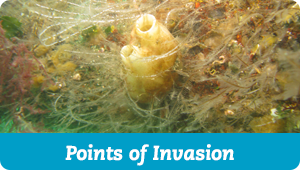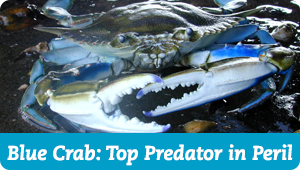Many parasites have a talent for making their hosts do strange things. But for sheer science-fiction level bizarreness, very little matches the invasive, crab-castrating barnacle Loxothylacus panopaei.
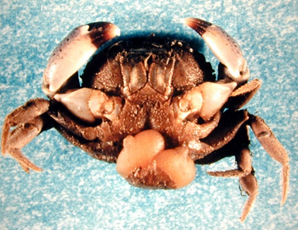
An infected mud crab. If fertilized, the protruding sacs on its abdomen will become filled with thousands of barnacle larvae.
The Loxothylacus barnacle reproduces by impregnating the white-fingered mud crab, a small brown crab barely the size of a quarter. First a female Loxo burrows into the crab’s shell, or carapace. There she hijacks the mud crab’s reproductive system, causing small sac-like structures to emerge on the crab’s abdomen. Then the female Loxo waits until a male Loxo appears to fertilize the sac. Once that takes place, the crab is forced to nourish, shelter and eventually give birth to thousands of barnacle larvae. The process renders the crab completely unable to reproduce its own offspring again. If the crab happens to be male, the barnacle still causes it to treat the sac as if it were a female protecting a mass of its own eggs.
Loxothylacus is just one of more than a hundred invasive species that have infiltrated Chesapeake Bay waters. Invasive species—species that are transported outside their native ranges and do serious ecological or economic harm in new environments—can come from anywhere. Scientists think Loxo hitchhiked from the Gulf of Mexico in shipments of oysters, which can contain infected mud crabs. Other species are picked up in the ballast water inside ship hulls, or latch onto the outside. Sometimes people deliberately bring a new species into an area, without realizing the harm it can do to the environment and—quite often—the economy.
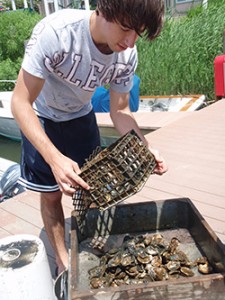
Volunteer Donald Mitchel Brumsted dumps out oysters from a crab collector. Crab collectors aren’t traps. But because mud crabs use oyster shells for habitat, biologists hope the “crab condos” will attract enough mud crabs for them to study. © Monaca Noble/SERC
Not all foreign species are invasive. Some non-native species get along perfectly well with their new neighbors. But the ones that don’t can decimate native species, erode shorelines, damage equipment, and cause problems that can cost billions of dollars to fix. These are the species biologists call invasive.
But why should Loxo matter—especially when it only infects something so tiny? Mud crabs, while not popular for eating or selling, are still part of the Chesapeake Bay ecosystem. But there is another reason: A similar barnacle, Loxothylacus texanus, is infecting blue crabs in the Gulf of Mexico. If allowed to spread, L. texanus could cripple an entire fishery. SERC ecologists hope by understanding how Loxothylacus panopaei succeeds, they can better prepare in case its cousin ventures north.
Learn more!
Find out about other invaders SERC biologists are tracking in the Marine Invasions Lab.

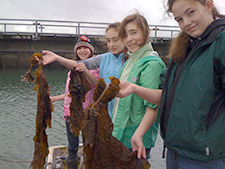
 Learn about the marine invaders in your area (check out the
Learn about the marine invaders in your area (check out the 